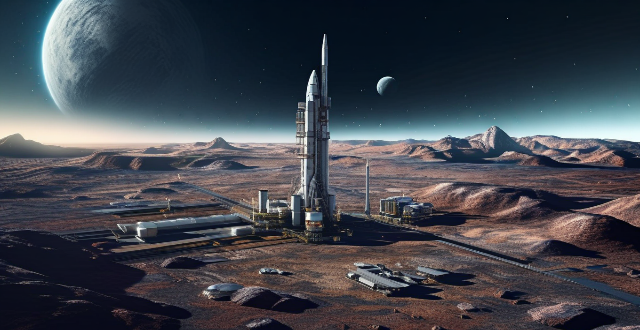Rocket launches are complex and dangerous events that require numerous safety measures to ensure the success of the mission and the well-being of all personnel involved. Over time, these safety measures have evolved and improved significantly due to advancements in technology, increased understanding of potential risks, and lessons learned from past incidents. Before a rocket is launched, several safety measures are taken to minimize risks, such as design reviews, quality assurance testing, personnel training, range safety, and weather checks. Once the rocket is launched, additional safety measures come into play, including telemetry tracking, flight termination systems, and emergency evacuation plans. After the rocket has successfully reached space, there are still safety considerations, such as debris tracking and environmental cleanup. Safety measures during rocket launches have improved significantly over time due to advancements in technology, increased understanding of risks, lessons learned from past incidents, and stricter regulations and standards developed by government agencies and industry organizations.

Safety Measures During a Rocket Launch
Rocket launches are complex and dangerous events that require numerous safety measures to ensure the success of the mission and the well-being of all personnel involved. Over time, these safety measures have evolved and improved significantly due to advancements in technology, increased understanding of potential risks, and lessons learned from past incidents.
Pre-launch Safety Measures
Before a rocket is launched, several safety measures are taken to minimize risks:
* Design Reviews: The design of the rocket undergoes rigorous reviews to identify any potential issues or weaknesses.
* Quality Assurance Testing: All components of the rocket are thoroughly tested to ensure they meet strict quality standards.
* Personnel Training: All personnel involved in the launch receive extensive training on safety procedures and emergency response protocols.
* Range Safety: The launch site is cleared of all non-essential personnel, and range safety officers monitor the area for any potential hazards.
* Weather Checks: The weather is closely monitored to ensure it meets specific criteria for a safe launch.
In-flight Safety Measures
Once the rocket is launched, additional safety measures come into play:
* Telemetry Tracking: The rocket's progress is tracked via telemetry to detect any anomalies or issues.
* Flight Termination Systems: If something goes wrong during flight, flight termination systems can be activated to destroy the rocket before it causes harm to people or property on the ground.
* Emergency Evacuation Plans: In case of an emergency, personnel at the launch site have predefined evacuation routes and procedures.
Post-launch Safety Measures
After the rocket has successfully reached space, there are still safety considerations:
* Debris Tracking: Any debris from the launch must be tracked to ensure it does not pose a threat to other spacecraft or satellites.
* Environmental Cleanup: The launch site is cleaned up to remove any hazardous materials and restore the area to its natural state.
How Safety Measures Have Improved Over Time
Safety measures during rocket launches have improved significantly over time due to various factors:
* Advancements in Technology: New technologies have allowed for more precise tracking and monitoring of rockets during flight, as well as improved communication systems between ground control and the rocket itself.
* Increased Understanding of Risks: As more rockets have been launched, our understanding of potential risks has grown, leading to better preventative measures being implemented.
* Lessons Learned from Past Incidents: Unfortunately, not all rocket launches are successful. However, each failure provides valuable lessons that can be applied to future launches to reduce the likelihood of similar incidents occurring again.
* Stricter Regulations and Standards: Government agencies and industry organizations have developed stricter regulations and standards for rocket launches to ensure the highest level of safety possible.